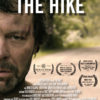
Jim McKay on C-Hundred Productions
Written by James Fox from the Boston Film/Video Foundation | Posted by: Anonymous
Jim McKay is a producer/director with C-Hundred Productions in partnership with musician and filmmaker Michael Stipe. The latest film produced by C-Hundred was "American Movie," which won the Documentary Prize at Sundance this year. He also produced and directed the critically acclaimed films "Girls Town" and "Lighthearted Nation." This summer, he will begin production on a new film, "Our Song." McKay was a judge on the recent Mass. Media Fellowship panel, the results of which were screened at the New England Film & Video Festival. He had time to respond to some of my questions after the post-Park City rush.
JF: How long have you been involved in "American Movie"? What has been your input, and at what "stage" of the film did you come in?
McKAY: I got involved with "American Movie" about two years ago. Chris Smith ["American Movie’s" director and cinematographer] and I both had films at Sundance in 1996 (his "American Job" and my "Girls Town"), but we never met or saw each other’s films while out there. We met in Chicago at an IFP Midwest panel and really hit it off. He pulled out this binder with stills and materials on about five different films he had in the works. I was kind of flabbergasted at his energy and productivity. I asked him to send me some tapes, and one of these was for a project then called "The Making of Northwestern." It featured three uncut rolls of 16mm footage (the only three rolls they had developed at this point and the first three rolls they had shot). The footage had me gasping. I found Mark Borchardt (the renegade filmmaker on whom the film is centered) to be compelling and charismatic. And I was impressed by Chris’ handling of the material. I immediately showed it to my C-Hundred partner, Michael Stipe, along with "American Job," and he was equally blown away. We had just done a big job for MTV (big for us at least) and had a bunch of cash in hand. Chris and Sarah [Sarah Price, his collaborator] were basically running out of film, and so our first move was to use our credit card and get them $5,000 worth of film immediately. No one wanted to be missing out on any shooting because there was no film!
Then we got them some money to round out our initial investment. I knew that they were in the thick of things with the shoot, so I went back to my other projects and didn’t really speak to them for maybe four months or so…. Finally I got a call from Chris, and he was a little confused, like why wasn’t I calling and checking up on our investment every week or month or whatever?
I said, "What, do you need more money?" He said, "No, I just wanted you to let me know what was up." And that was when my participation became more of a steady thing. Months later, the first rough cut was ready, and I started about nine months of New York-Milwaukee phone/fax/mail collaboration with Chris and Sarah on the cut. We ended up investing some more money, too. I like to be there when wanted/needed and not get in the way otherwise. I think it’s a good arrangement for me, and good for the filmmakers, too.
"American Movie" was a joy to work on. Although we had a contract of sorts when we started, tons of things changed in the interim, and we all had a relationship of trust to go with the flow. Chris and Sarah are both hardworking, smart, creative, honest, and humble people. These attributes, along with the greatness and excitement of the material itself, made for a wonderful experience.
JF: Would you tell the story of closing the "deal" for "American Movie" at Sundance? Wasn’t it in the Egyptian bathrooms?!
McKAY: We made the deal for "American Movie" in the bedroom of a condo in Park City (an equally strange place). We celebrated the deal in the men’s room of the Prospector Square Theatre that night. Robert Redford had come to our screening that night, and there were a bunch of policemen hanging around, providing security, I guess. We had stuck a few bottles of champagne in the snow outside, and when the coast was clear, we dug them out (I felt a little like Steve Buscemi in "Fargo," hoping that I could still find them) and went into the bathroom–the only place we could avoid the high security situation. Utah is Mormon Country, remember, and we didn’t want to end up in the slammer! I imagine they’d probably frown on a bunch of men and women downing champagne in the men’s room as well! The couple of guys who passed through to pee didn’t seem to mind, though.
JF: What is your next favorite project?
McKAY: My favorite project of the last year, along with "American Movie," is a short by Lisa Collins called "Tree Shade." We came in on the post-production on that film, helping out with funding and advice, etc. It is one of the smartest, funniest, and more stylish films I have ever seen. Lisa is a great talent, and I’m hoping we’ll work with her again. As far as future projects go, I’m excited about a documentary we’re developing with Hannah Weyer called "La Boda," about a Texan-Mexican-American family of migrant workers and the wedding of their eldest daughter. It’s a beautiful story, and the process is exciting, since it’s a documentary in its early stages and there are a lot of questions and possibilities.
JF: How many projects do you keep on the go at the same time?
McKAY: We are juggling about five or six projects right now, but they are in various stages of activity, so there are ebbs and flows. Right now things are crazy because we’re blowing up "American Movie" to 35mm, which is a complicated, high-maintenance job. We’re in the final month of editing on a feature called "Spring Forward" by Tom Gilroy, so that’s in high gear creatively. We’re gearing up to shoot the final section of Christopher Munch’s film "Backward Looks," "Far Corners," and I’m starting casting on my film. We’ll probably ease up on the projects this spring so I can concentrate on directing and then get cranking again next fall with other work. What is good is that we can go into development on some stuff now, and it won’t really need our attention until next fall anyway.
JF: Should festivals concentrate on films not signed for distribution? Should that be their raison d’etre?
McKAY: Every festival is different. Some function more as markets and others as artistic exchanges. The markets are necessary to some degree, and the other, mostly regional festivals are the dessert. The filmmaker always has more fun and gets more gratification at a festival where the audience is filled with eager film fans rather than industry folk.
I think the market-type fests like Sundance are difficult because…well, because of the clear contradiction between art and commerce, as necessary as their partnership may be. And I think the recent surge in micro fests is a problem, too. Every town in the country can’t have their own film festival. Well, they could if they were showing local and really independent work, but right now every other hamlet is starting up a film festival, many to simply "get in on" this indie film thing and not to bring in challenging work. What is needed are more places like BFVF and the Olympia and Austin Film Societies, places where they are not just showing work for one week out of the year just to have filmmakers visit and have a party sponsored by a trendy vodka…but where they are nurturing an ongoing screening and discussion support system for truly independent film.
JF: Did you submit your first work, "Lighthearted Nation," to any fests at the time? Any good response? Any advice to festival submitters?
McKAY: I had very little luck on the festival circuit with "Lighthearted Nation." I think it was a difficult video because it was very slow and took a long time to get going for the viewer. Festival screeners sometimes watch the first three minutes of something and then make a decision. Also, it was 45 minutes, a difficult length to program. I don’t have advice for filmmakers because I don’t know the process that well myself… Correct grammar and spelling on the application are a good start…
JF: For those that missed the December BFVF screening of "Lighthearted Nation," where can you get it on video?
McKAY: "Lighthearted Nation" isn’t too available…except in select video stores. We’ve slacked off on the distribution thing due to lack of time and the attention it demands. It has almost sold out of its second run. Maybe we’ll do another run someday. We’ll see.
JF: How do you typically respond to production approaches–guarded?
McKAY: I try to respond politely to approaches, because I don’t have a staff–not even an assistant. I’m especially prejudiced against proposals that come addressed to Michael and not me. I feel like those people haven’t done their homework and just want money from the REM guy, not from Michael and Jim, the film producers. I try to respond to everything, but no longer feel the need to return unsolicited tapes or scripts, for instance.
Officially, we don’t accept proposals. The way we find material is via word of mouth, scouting festivals, etc. It shuts us off to certain possibilities, I’m sure, but we don’t have the ability to do any more than that. I have no interest in reading a script I haven’t asked to read. The reading of it and the responding to it are too time-consuming to do and do right. The way for a filmmaker to find their way to C-Hundred is to make great work and get out in the public with it, or find themselves working with someone we know, and that pool of people is pretty large.
JF: How would you contrast C-Hundred’s operating system with that of other production companies, e.g. Good Machine?
McKAY: I’m not sure, but I bet C-Hundred now is something like Good Machine in their first year, at least philosophically. I respect and admire Good Machine a great deal. They are pretty big now and still doing a good job at balancing the big and small projects.
My goal is to connect with some investors who are interested in making…$25,000 on a $25,000 investment, not $2 million on $2 million. Right now, what I know and what I’m good at is films that are produced under the radar, whose costs are low enough and quality high enough so that a return on the investment isÉlikely, if not guaranteed.
As far as [film]makers go, we’re interested in working with people, not for or above them. We look for makers who have hands-on experience, the ability to support their own project as much as we can, and the personal investment to see things through. We aren’t investors, and we aren’t line producers; we’re collaborators.
The inevitable temptation is to get involved with much bigger work in an attempt to support the smaller work. This is a strategy that rarely succeeds, because you end up spending all your time on the money stuff and never have spare time or creative thought or heart for the small stuff that you started off saying was the priority in the first place.
JF: As a filmmaker, what are your bigger influences, and what do you enjoy–not always the same thing maybe. Who would you like to work with?
McKAY: Hmm…influences: Spike Lee, Frederick Wiseman, John Cassavetes. Lately I’m constantly more inspired by indie/experimental/doc hybrids than the latest poseur independent film put out by Miramax or whoever. I’m digging stuff put out by Zeitgeist, Fox Lorber, New Yorker Films, by filmmakers themselves. I’ve been inspired by Derek Jarman’s writing a lot lately. And I’m constantly seeking out work by non-white filmmakers who can tell me a story or show me a world that I don’t necessarily know intimately.
My two favorite films of the winter are "The Apple from Iran" and "The Adopted Son" from Krygystan. It’s a shame that US makers aren’t making this type of work. Hype and money have stifled creativity here. Last year I liked "Seventh Heaven," "Will It Snow For Christmas," and "Ma Vie En Rose," all from France; "The Celebration," "Public Housing," and "Kundun." I thought "Out of Sight" was a gas, too!
I’m excited by and influenced by work that is outside my doc/verite aesthetic–dreamy stuff, good storytelling, good comedy. Nothing turns me off more than "clever," pithy dialogue (a la Tarantino), guns, or soundtrack-driven filmmaking. I want film to take me someplace new and to teach me something about myself and about others.
JF: Where did you learn your own filmmaking skills, in the Boston area?
McKAY: I learned about movies from sitting in dark theaters watching them! After a Basic Super-8 class at Boston College, I got a job at Coolidge Corner Theatre (then Coolidge Corner Cinema), which is where I spent a formative year watching Fassbinder ("Berlin Alexanderplatz"), Chantal Ackerman ("Jeanne Deilman"), Wim Wenders ("The State of Things"–I fell asleep, but still…!), and smaller films like "Wild Style," which showed me the seeds of possibility. Then I moved to San Francisco and basically lived at the Roxy and York Cinemas, seeing as many as ten films a week.
The two films that taught me the most when I was starting out were "Do the Right Thing" and "Gates of Heaven." The first showed me that politics could be entertaining and flashy and both didactic and provocative at the same time. The second taught me that drama could come from places other than voice-over narration or traditional narrative structure.
JF: What were the overall impressions about Massachusetts work from your recent stint on the Mass. Media Fellowship panel?
McKAY: Massachusetts is obviously a documentary-friendly region, and that was reflected in the work we saw. I was disappointed with the small number of fictional narrative submissions. Well, actually, that’s not true. I’m glad to see that makers in Mass. are more interested in other genres, but I guess I wanted to see more quality dramatic pieces, rather than quantity. The most exciting category was experimental documentary and other work that crossed genres. It was also fun (up to a point!) to see a lot of the public access-type stuff that was submitted. People are doing some weird stuff!
JF: Is there any way to get around the judging "process" itself being such a large factor in these panel reviews, or do you think that the cream of the crop rises regardless?
McKAY: There’s no accounting for taste, and one person’s cream may be another’s soy milk. The panel’s tastes are definitely going to make a "bias" in what work gets rewarded. But you’re not judging mathematics, you’re judging "art," and so there’s obviously no way around that. It is one of the reasons why makers should reapply to funders over years. The next panel might be your panel.











